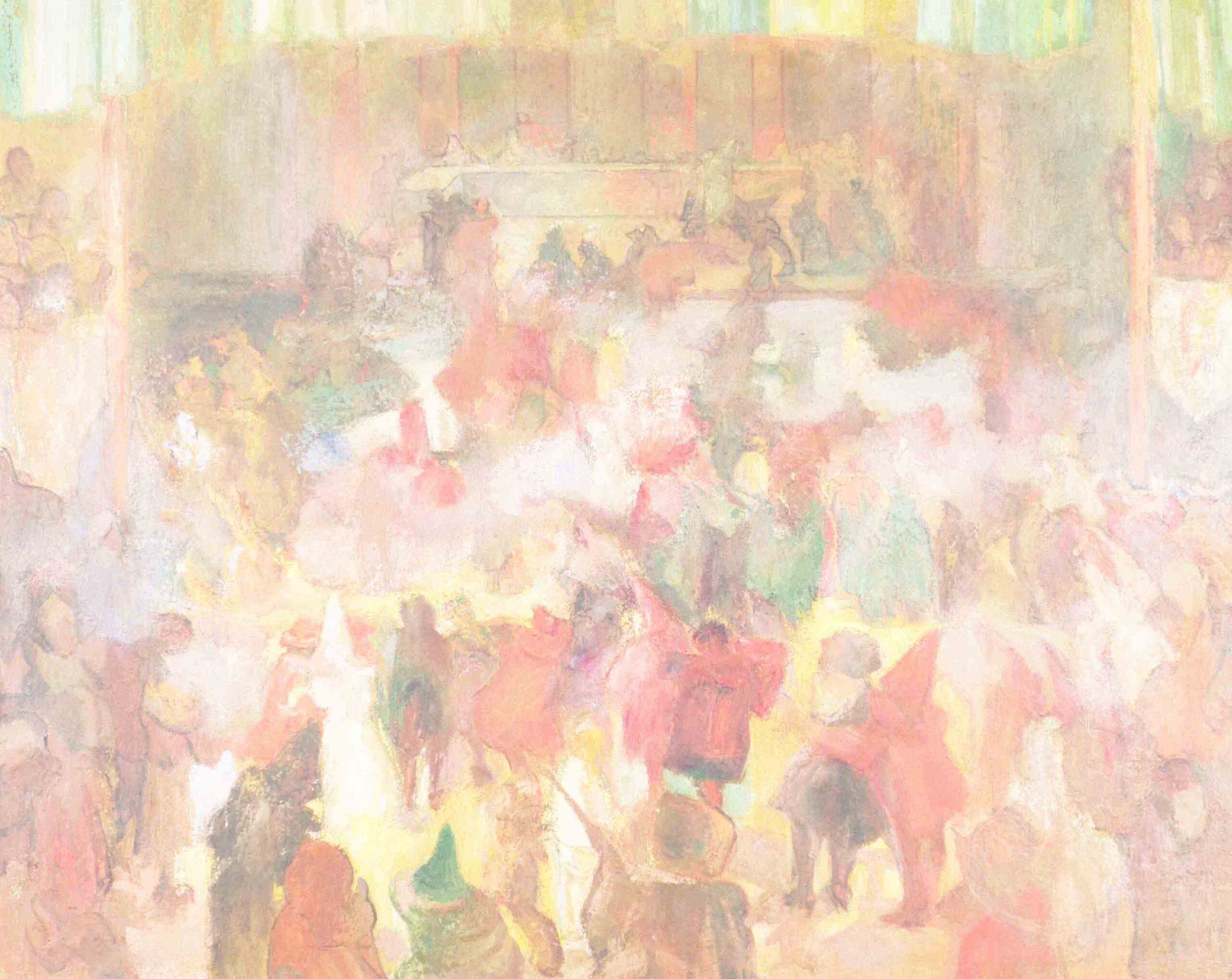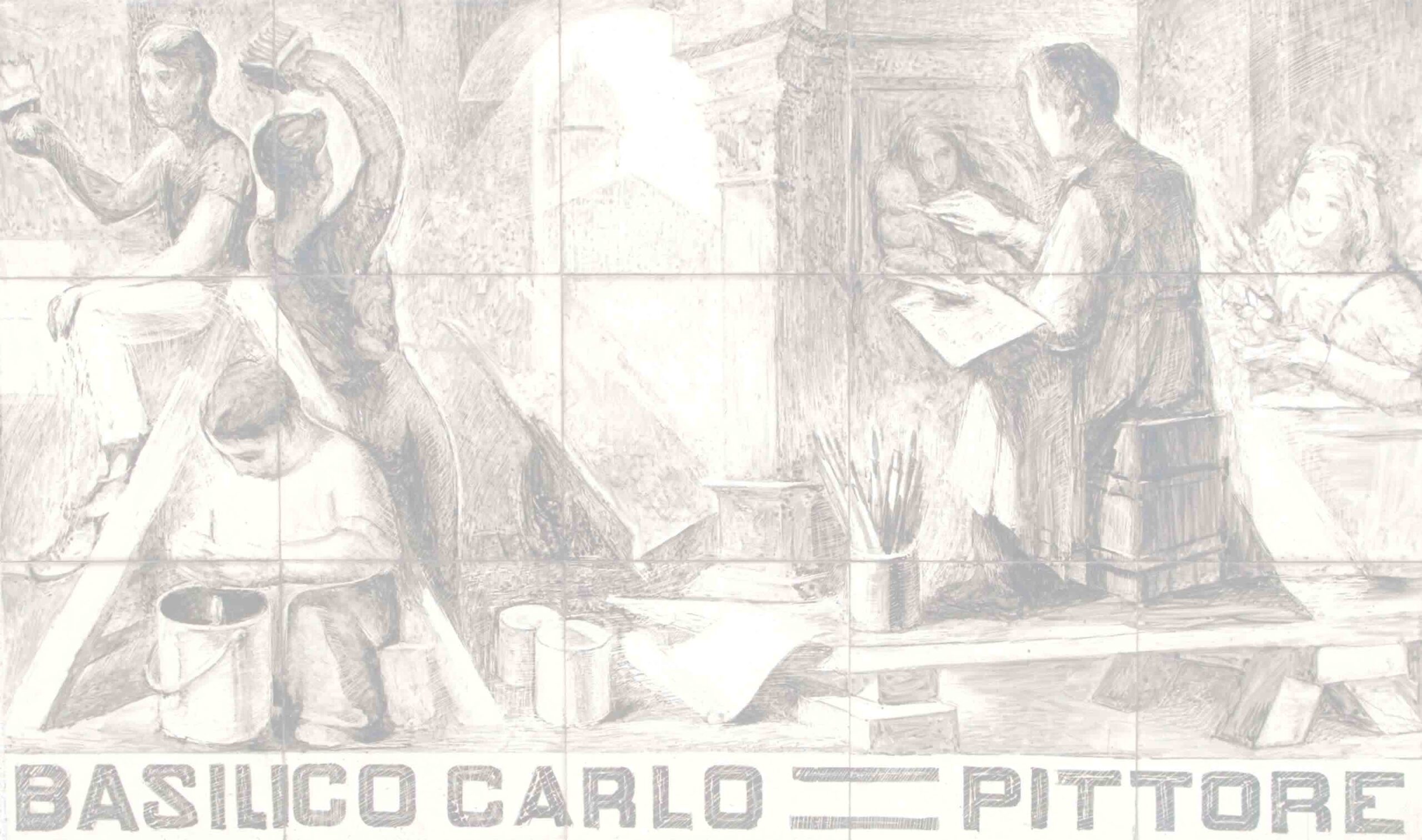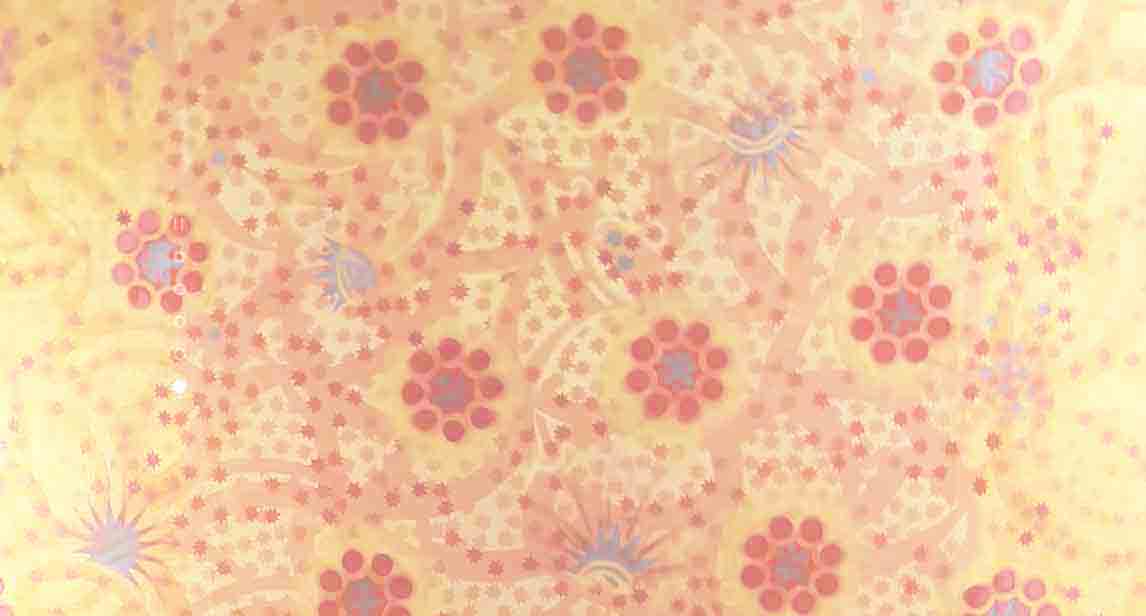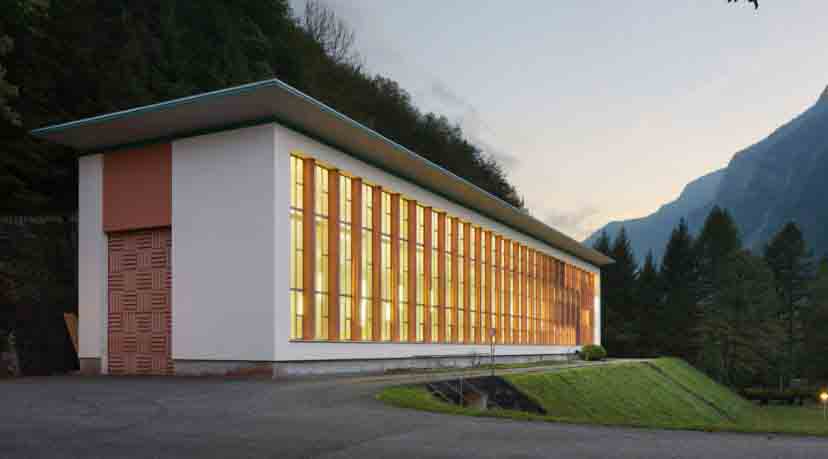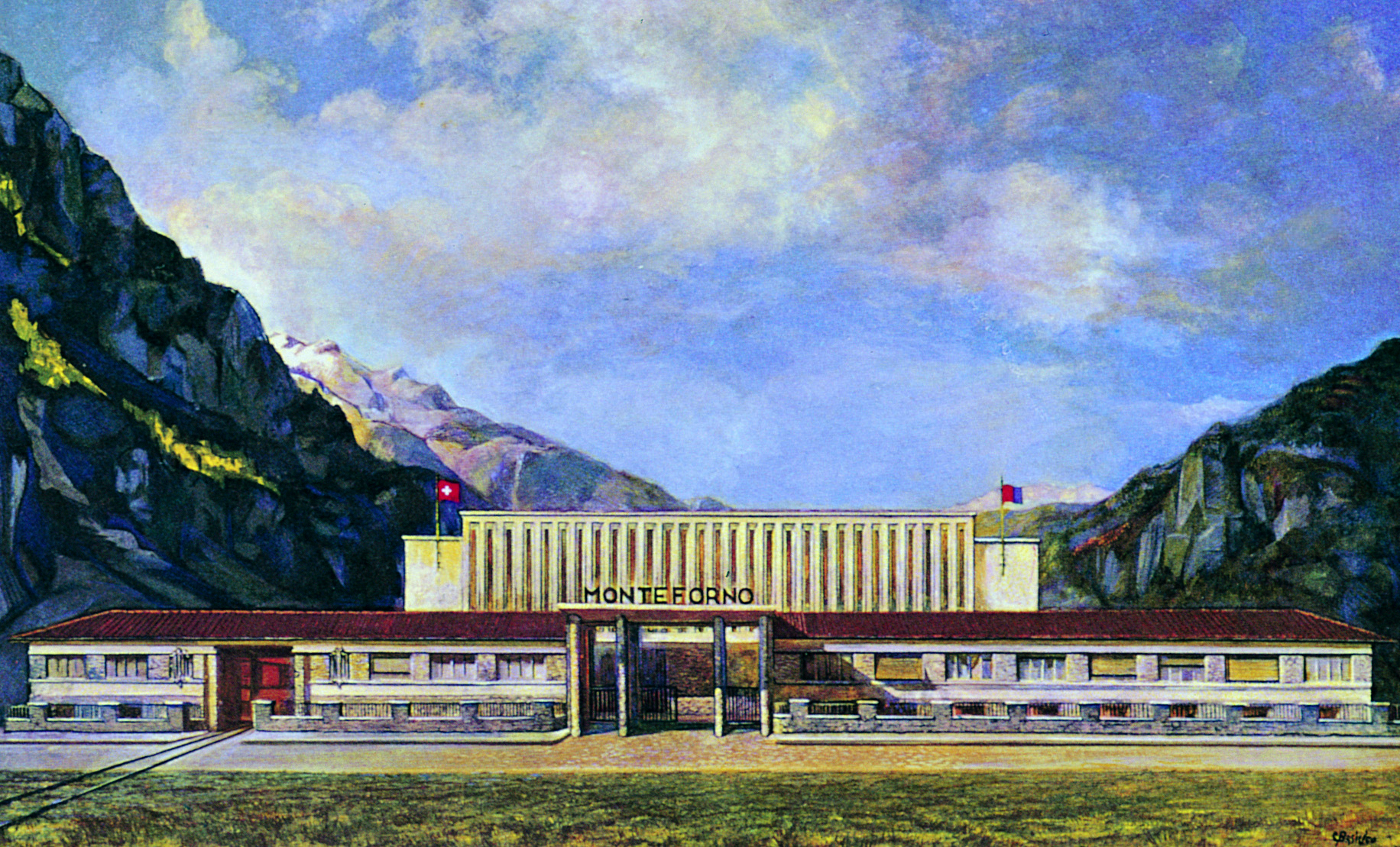Carlo Basilico
Painter 1895-1966
His Life
Exhibitions
Catalogues
His Painting
Decorations
Architecture
Video: «HIS» ART
Video: Introduction to his painting
Video: Style and Techniques
His Life
Carlo Basilico was born in 1895 in Rancate into a working-class family of modest means.
Already as a young man, he revealed his artistic talent at the Evening School of Drawing in Mendrisio, Ticino.
In 1910, at the age of fourteen, he left for Turin, where he worked during the day and in the evenings attended the San Carlo Evening Technical Workers‘ Schools, then very renowned for decoration.
He graduated in 1915 and was awarded the Silver Medal in Ornamentation. This award opened the doors to him in the workshops of the Turin painters Smeriglio and Cornaglia.
In 1916, at the height of the war, he joined his family in Ticino. At first he worked for the painter Cesare Rusca in Ligornetto and, in 1918, he joined the Prada decoration company, based in Via Simone Cantoni in Chiasso.
In 1920, he married Pietro Prada’s daughter and in 1926, after the death of his father-in-law, he continued to run the business beyond the crisis of the 1930s.
In 1922, his first daughter Graziella was born, and in 1929 he lost his six-month-old son.
He was a great friend of Apollonio Pessina, a sculptor from Ligornetto.
He died in 1966 of an occupational disease due to industrial paint poisoning.
His Painting: Notes by Claudio Guarda
His painting is dominated by an unusual colourism. Pure colour, not mixed on the palette, given by quick touches, often played on the counterpoint between areas of light or shadow.
He builds his paintings, not on drawing, but with colour and a structural sign, with which he conveys the energy and feelings of joy and sadness of the moment experienced.
Themes and subjects are part of everyday life: portraits and self-portraits, in which he pursues the continuous investigation of himself, the observation of family harmony, of the corners of the home, still-lifes and the great passion for nature and landscapes.
He felt it congenial to express himself with different techniques, moving with great flexibility from oil to tempera, from watercolour to ink, from pastel to charcoal, from pencil drawing to sanguine.
He approached his subjects with ever different compositional cuts, varying the way he approached and represented them, even mixing techniques so as to play a different music or emotion each time.
These are the forms and themes of Carlo Basilico’s art, always inspired by the feeling of truth and supported by a contemplative and meditative gaze that, while emphasising light-colour, captures reality in its fleeting moment.
Video: «His» Art
Catalogues of Two Anthological Exhibitions
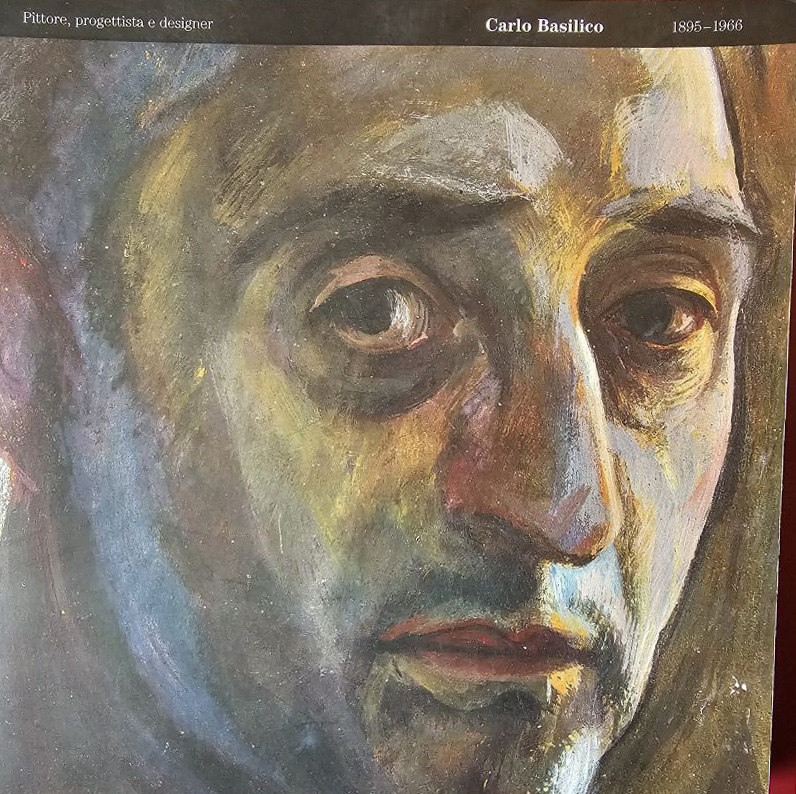
Catalogue of the exhibition at the Cinema Teatro in Chiasso, 1998
Carlo Basilico 1895-1966: Painter and Designer
Curated by Nicoletta Ossanna Cavadini
Department of Culture, Municipality of Chiasso
Arti Grafiche Tettamanti, Chiasso 1998, p. 204
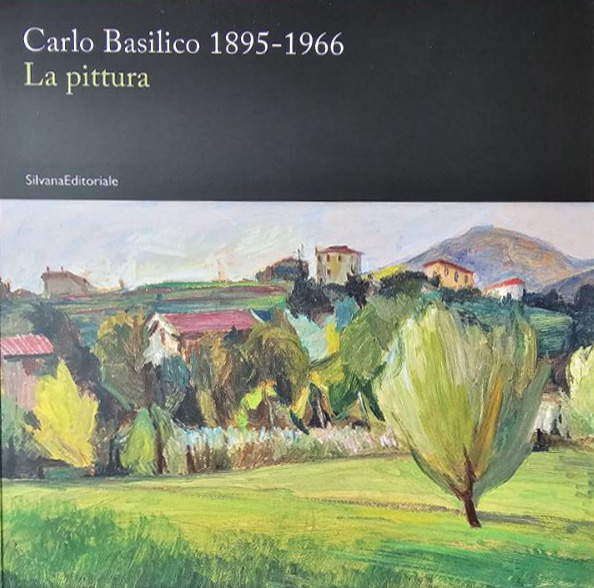
Catalogue of the exhibition at Pinacoteca Cantonale Züst in Rancate, 2019
Carlo Basilico 1895-1966, The Paintings
Curated by Claudio Guarda
with two contributions by Alberto Nessi
Silvana Editoriale, 2019, p. 255
Video: Introduction to his painting
Exhibitions
From 1926 until 1961 he regularly exhibited at the Annual Exhibitions of the Ticino Fine Arts Society in Lugano, and
- 1930 at the Kunsthaus Zurich
- 1939 at the Swiss National Exhibition in Zurich
- 1941 at the «Exhibition of Eight», Mendrisio
- 1945 at the «Art of Ticino», Kunsthaus Zurich
- 1961 at the Brissago Islands Works From Ticino Public Collections
Posthumous Exhibitions
- 1988 «Witnesses On The Hills» at the Mendrisio Art Museum
- 1998 «Carlo Basilico, Painter, and Designer» at the Cinema Theatre in Chiasso, his first anthological exhibition dedicated to all aspects of his creative art
- 2017 «Valle Of Muggio In The Mirror» at the Ethnographic Museum of Cabbio
- 2019 «Carlo Basilico, Paintings» at the Pinacoteca Cantonale Züst in Rancate, his second anthological exhibition dedicated to understanding his pictorial language
Decorations, Graffiti and Paintings
There are countless interior and exterior decorations in Mendrisiotto.
The most significant are:
- 1926 graffiti on the Torretta Pedroli, Corso San Gottardo 26, Chiasso.
- 1935 Cinema Theatre in Chiasso: decoration of the ceiling, hall, foyer, and exterior wall.
- 1942-45 Works by Polus SA in Balerna: decoration of the refectory (which became the ‚Sala Basilico‘ in 2008): three large tempera paintings, twelve monochrome graffiti and nine movable panels depicting the processes of tobacco processing and some of the surrounding places where the cigar-makers came from or passed through.
- 1943 five of the twelve graffiti, created on the exterior walls of the Hotel Bellavista (demolished in 2014), were recovered and placed in 2017 in the atrium of the “Stone Flower” on the summit of Monte Generoso.
Architecture
From 1954 to 1958, on behalf of the industrialist Luigi Giussani, among other things, he prepared in:
- 1954 the project for the façade of the ex-Monteforno in Bodio
- 1955 the project for the single-family worker’s cottages in Giornico
- 1956 the project for the façade of the Lostallo power station
